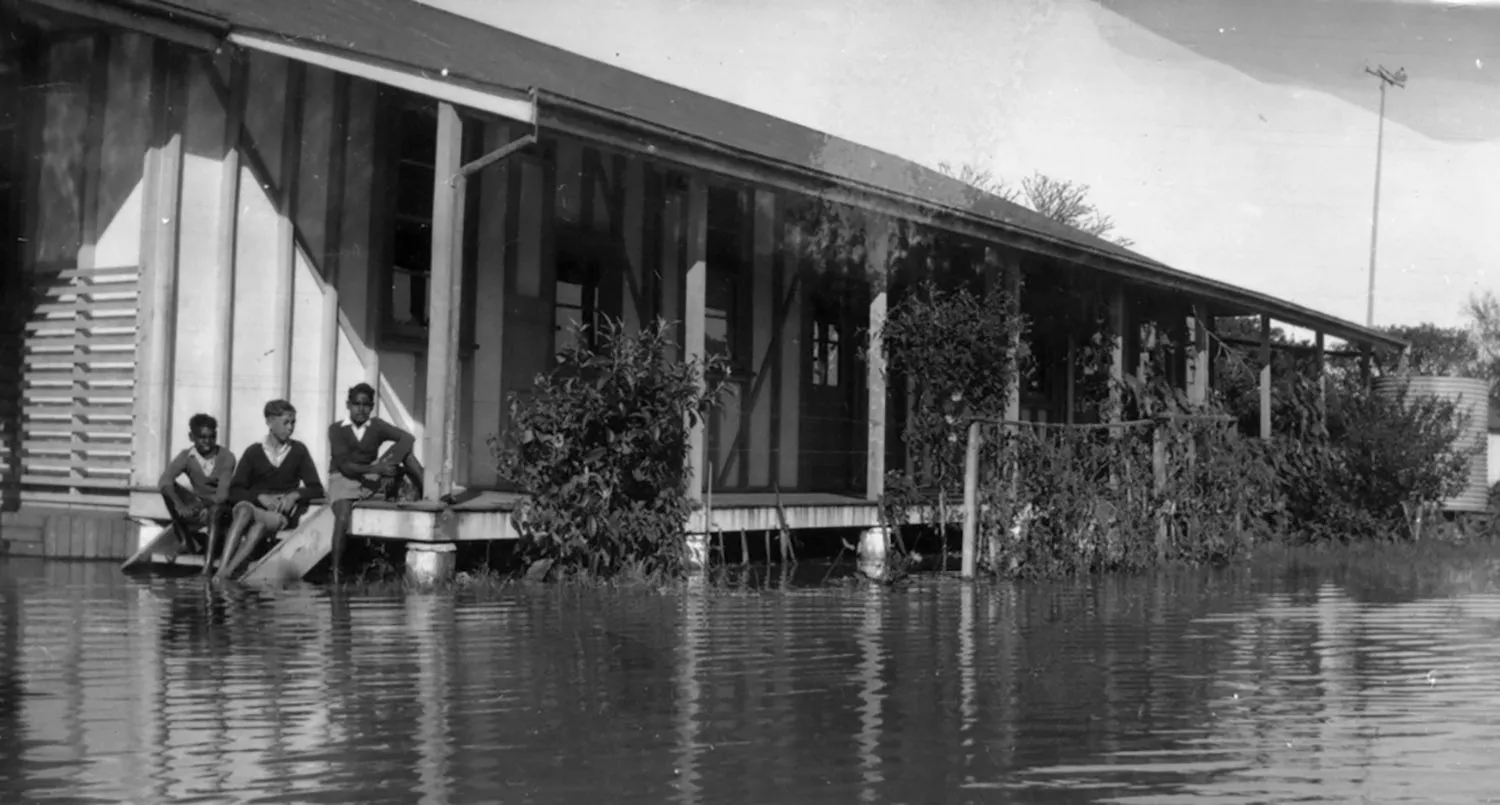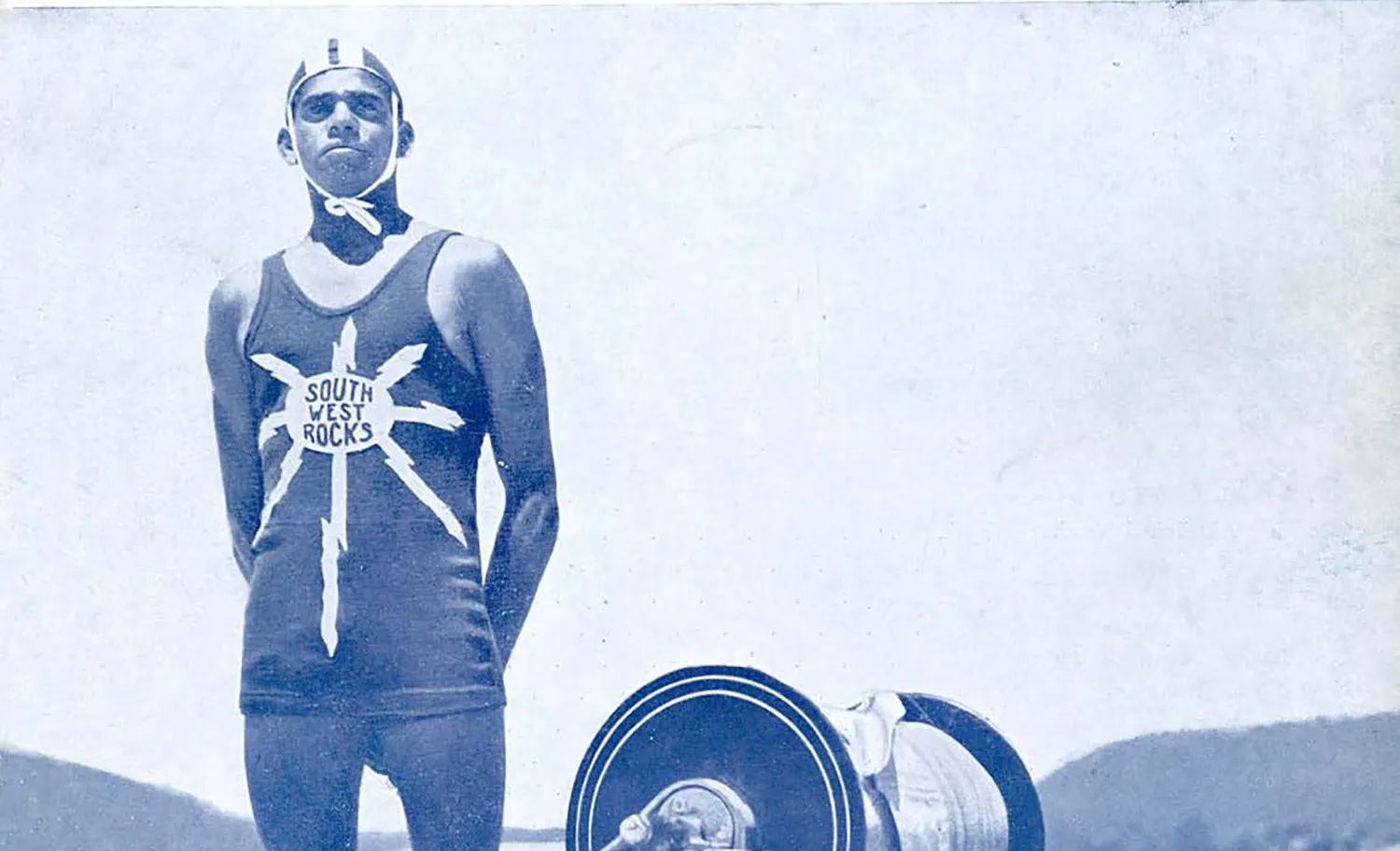Please be aware that this site contains photographs and references to deceased persons—our apologies to Aboriginal and Torres Strait Islanders.
Please also note that, due to the historic nature of some of the content, the views that are expressed may not reflect the position of KBHAC.

Kinchela Aboriginal Boys Training Home was built on the stolen land of the Dunghutti on the Mid North Coast of New South Wales. It was run by the NSW Government for over 50 years, from 1924 to 1970.
Kinchela Aboriginal Boys Training Home (KBH) was established by the Aborigines Protection Board and located on the site of the Kinchela Aboriginal Reserve.
Children of families living and farming at the reserve, including the Drew family, are incarcerated at the institution.
KBH has the same function as the Singleton Boys Home, in Singleton NSW. That institution closed in 1923 and most of the boys were transferred to KBH.
In the first years of the institution, the daughters of Aborigines who lived too far away from a school were also accommodated at KBH.

Original ‘tin shed’ dormitory at KBH, c1925 (Source: State Records NSW)
Dormitories, described as large “tin sheds”, are constructed for the children.

KBH boys feeding chooks on farm, 1959 (Source: NSW State Records)
The institution contains 29 acres of land used for farming crops, a dairy herd, horses, chickens and pigs.

1917 manager’s house with additions, early 1930s (Source: State Records NSW)
Extensions are made to the original manager’s residence at KBH.
An article in The Macleay Chronicle describes the “care of Aboriginal youth” at KBH. The article notes that at this time the gardens managed by the boys contain cabbage, onions, potatoes, lettuce, spinach, cauliflower, beetroot, rhubarb, strawberries and a wide variety of flowers. The article includes photographs of the home.
KBH boys in vegetable garden north of 1948 manager’s house, circa early to mid 1950s (Source: NSW State Records)

Official Opening of new KBH dormitory buildings, 1935 (Source: State Records NSW)
OCTOBER 18TH
Official opening of new dormitory buildings at KBH. Original dormitories are replaced. The new dormitories and other buildings (including laundry) more than double the capacity of the home, accommodating over 80 boys.
Constructed by Mr. A. J Avery of Taree, the new long rectangular buildings are clad in fibro internally with hipped corrugated steel roofs and timber floors internally. Another fibro building with cement floors is erected, used as a laundry, W.C, grocery, clothing and general store, scullery, tool room and powerhouse.

Official Opening of new KBH dormitory buildings, 1935 (Source: State Records NSW)
The boys in the home contribute to the construction of the buildings, including mixing concrete for the floors and constructing the network of footpaths around the home.
Complaints of cruelty and abuse are recorded against the then manager at KBH, Mr McQuiggin.
Accused of drunken and abusive behaviour, he is reprimanded but remains employed, being relocated to Cummeragunja Mission (Southern NSW). This prompts a walk off in Cummeragunja.

Schoolroom at KBH, 1959 (Source: National Archives)
The Kinchela Aboriginal Provisional School is closed and re-opened as Kinchela Aboriginal Public School. The school offers basic elementary education at a primary school level.
From this time onwards, a small number of KBH boys are permitted to attend Kempsey High School. The number of boys attending High School gradually increases.

New school building at KBH, mid 1940s (Source: State Records NSW)
New bathroom facilities are constructed at KBH, including bathrooms directly connected to the dormitories. A modern dairy and separator room are also constructed, along with a store and kitchen annexe.
Mr Jacobs, the local inspector of schools, complains of poor educational standards in Aboriginal Schools due to low attainments of teachers.
Arguing that Aboriginal students in mixed schools perform just as well as white students, he contends that Aboriginal students should be permitted to attend local schools, or else teachers in Aboriginal schools should be recruited from among the best and not the worst of the Department’s teachers.
Jacobs proposes the amalgamation of the Kinchela Aboriginal School with the local Kinchela Lower School, by transferring the KBH school building to the public school site. White parents of students at the Kinchela Lower School oppose the plan.
Jacobs meets with the parents to explain the benefits of the proposed plan. First, Jacobs highlights the benefit of savings in cost of repairs to the old local school building; second, that the increase in number of students would ensure that the school kept its very popular second teacher; and third, that Aboriginal boys would benefit from the contact with a male teacher and “other Australian boys and girls”.
The proposal is rejected at a meeting on 15 December 1947. Of the 40 parents only one votes in favour of the amalgamation, with 33 votes against and 6 abstentions. Upon the rejection of the proposal, Jacobs remarks: I hope the next generation will be more broad-minded.
Mr Jacobs, the local inspector of schools, complains of poor educational standards in Aboriginal Schools due to low attainments of teachers.

KBH boys in swimming pool (Source: Sydney Morning Herald)
The swimming pool at KBH is constructed by the boys themselves.

KBH boys in front of new manager’s house, c1950 (Source: State Records NSW)
A new residence is built for the Manager at KBH. A cottage on the site is also rebuilt for use by the laundryman. A contract is let for the construction of a new barn and produce store for the farm.

KBH during floods, 1949 (Source: NSW State Records)
AUGUST
Flooding of the Macleay River. KBH is inundated by the flood, the water rising to a height of one metre in all buildings. The boys are evacuated and temporarily accommodated at Burnt Bridge.

KBH during flood, looking southwest to northeast corner of school building, circa late 1950s to early 1960s (Source: Macleay Historical Society Inc.)
JUNE
Further flooding of the Macleay River. The water levels cause extensive damage to the home. The boys are evacuated and temporarily accommodated at South West Rocks.

KBH during flood, looking southwest towards northeast corner of main building, circa late 1950s to early 1960s (Source: Macleay River Historical Society)
After 1959, whenever the home is flooded the boys are relocated to the Aboriginal Reserve at South West Rocks in the former South West Rocks Public School building. This is also used as the base for South West Rocks sporting events and school holidays.

View from main gate towards main building with parade ground in foreground (1948 manager’s house on right), circa early to mid 1950s (Source: NSW State Records)
The original 1920s entry gates are replaced with a pair of gates with “KINCHELA BOYS HOME” in steel letters across the top.

KBH boy boxing in the ring
The boys at KBH participate in local sports activities, gaining a reputation in swimming, football, boxing and surf lifesaving.

KBH survivor Burnum Burnum (Harry Penrith) at South West Rocks Surf Life Saving Club, c1953
JANUARY 3RD
Burnum Burnum (Harry Penrith) gains his Bronze Medallion with South West Rocks Surf Life Saving Club. He is the first known Aboriginal to gain his Medallion with the club, and the second Aboriginal in Australia to register this achievement.
The KBH school choir wins first place for the third successive year in the Kempsey Eisteddfod – small school choirs section.
Kempsey Council bans the KBH boys, along with the local Aboriginal community, from swimming in the local Kempsey swimming pool.
The manager’s residence and two staff houses are raised on concrete and timber piers to avoid flood damage. Other buildings remain at their original level.

KBH boys at West Kempsey Primary School, 1963 (Source: Dawn Magazine)
The Aborigines Welfare Board requests the Department of Education merge the Kinchela Aboriginal School into the local Kinchela Lower School. The headmaster reportedly favours the merge and the Department gives its approval.
A group of families in the white community protest and form a petition against integrating the schools, believing the amalgamation would “swamp” the school with Aborigines. The proposal is again rejected.
Kinchela Aboriginal Public School closes.
Pupils from the Kinchela Aboriginal Public School are merged into West Kempsey Primary School.

Ken Johnson on Tractor KBH (source: Dawn 14-8-1965 pg1 FC)
Freedom Rides draw attention to racism in country towns, including Kempsey.

Charles Perkins with Aboriginal residents at Moree during Freedom Rides (Source: State Library NSW)
Charles Perkins, first Aboriginal graduate from the University of Sydney and other members of SAFA (Student Action for Aborigines), tour country towns in NSW to draw media and government attention to explicit racism experienced by Aboriginal people.
The tour notes discrimination in education, and the poor standard of education that Aboriginal students are receiving.
In Kempsey the Freedom Ride targets the local council-owned pool, which excludes Aboriginal people. KBH is not a focus of attention during the Freedom Ride visit to Kempsey.

1967 Referendum FCAATSI poster (Source: National Museum Australia)
MAY 27TH
The 1967 Referendum changes the Australian Constitution to include Aboriginal people, giving recognition to Aboriginal people as full Australian citizens.
It brings substantial change and highlights the fact that Aboriginal and Torres Strait Islander Australians are second-class citizens with many limitations on their lives.

Herbert Simms Dawn Magazine 14-12-1965 Page 05
OCTOBER
Herbert Simms, a former KBH boy, is appointed as new manager of the home after joining the Aborigines Welfare Board in 1965.
The Aborigines Welfare Board is abolished following the 1967 Referendum.
The referendum also results in changes to the way Aboriginal children are removed and segregated. Responsibility for Aboriginal Affairs is assumed by the Federal Government and Aboriginal children under the care of the Aborigines Welfare Board become Wards of the State.
The Kinchela Aboriginal Boys Training Home is closed. The last boys are transferred from the home, with a number being sent south to Royleston Boys Home in Glebe, Marella Mission Farm in Kellyville and Berry Boys Farm in Berry.